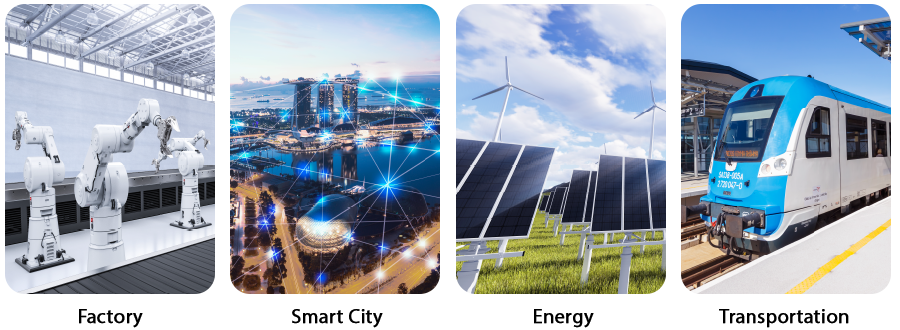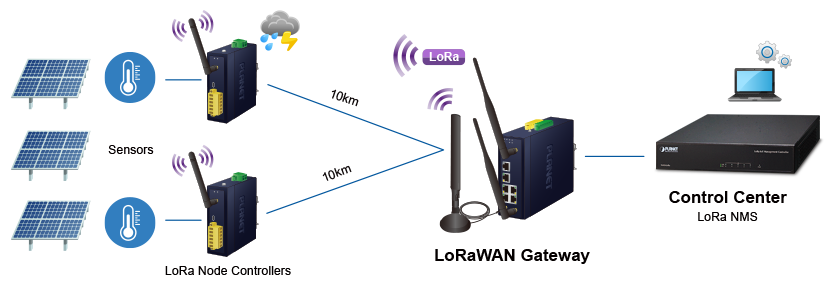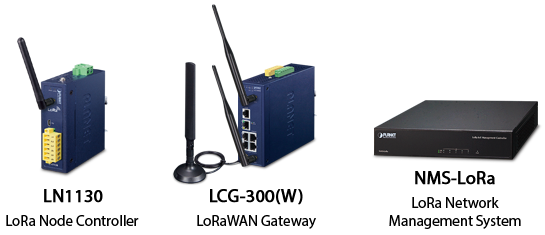‘Nodes’ is a term that refers to any physical device connected to the internet, such as computers, modems, servers, bridges, and printers. According to some estimates, in 2030, the number of Internet of Things (IoT) devices, or nodes, will surpass 25.4 billion. Ensuring these nodes can communicate with the internet is one of the most significant challenges in building future networks. An industrial node controller is a small computer that acts as the brain of a device or system within a more extensive industrial automation system. Critical functions of industrial node controllers include:
- Communication
- Control
- Data collection
- Data processing
An industrial node controller might monitor a system’s performance, collect temperature and motor speed data, and send that data to a control center. This information can then be used to identify potential problems and take corrective action.
What is LoRaWAN?
LoRaWAN stands for Long Range Wide Area Network and is a proprietary connectivity protocol developed by Semtech, a global semiconductor company. Released in October 2020, the current specification of LoRaWAN (version 1.0.4) is distinguished by its low power usage and high transmission range compared to other LPWANs.
Known for its high resistance to interference and record-breaking transmission range of 702 kilometers, LoRaWAN evolved from technologies originally developed for the military and space industry. Ideal for various IoT use cases, LoRaWAN is the software layer that governs how devices transmit and format messages when using LoRa (long-range) hardware.
What are the features of LoRaWAN?
Some of the core features of LoRaWan include:
- Long-range transmission: In crowded urban areas, LoRaWAN transmits and receives signals up to three kilometers. In rural areas, this distance can increase to up to 10 kilometers.
- Ultra-low-power: End devices operate in a low-power mode and can last up to 10 years on a single coin cell battery.
- Deep indoor penetration: Can easily provide network connectivity to devices on multiple floors within the same building.
- High capacity: LoRaWAN servers can handle millions of messages from thousands of gateways.
- Geolocation: End devices can be located by triangulation without GPS.
- Public and private deployments: Deployment is straightforward because public and private LoRaWAN networks use the same basic hardware.
- Low cost: Minimal infrastructure, inexpensive nodes, and open-source software keep the costs of LoRaWAN down.
- Roaming: Seamless handovers from one network to another.
- License-free spectrum: No expensive frequency spectrum license fees are required because LoRaWAN can operate on license-free ISM bands.
- Remote firmware updates: Applications and LoRaWAN stacks can be updated remotely for single-end devices or groups of end devices.
- End-to-end security: AES-128 encryption secures communication with LoRaWAN.
To verify that devices are reliable and compliant with LoRaWAN specifications, the LoRa Alliance offers a certification program.
What are its limitations?
Despite its numerous benefits, LoRaWAN does have a few drawbacks.
- Scalability: LoRaWAN networks can handle large numbers of nodes, but dense deployments with massive numbers of devices can cause network slowdowns and congestion.
- Low Bandwidth: LoRaWAN prioritizes long-range and low power consumption over data speed, meaning it can only transmit small amounts of data (a few kilobytes per second). This limitation makes LoRaWAN unsuitable for applications requiring real-time data transfer or large files.
- Security: Properly implementing security measures is crucial with LoRaWAN because networks, like any wireless technology, are susceptible to security breaches.
- Single-hop architecture: LoRaWAN devices communicate directly with gateways. This feature limits coverage in areas with significant physical obstacles or long distances between devices and the gateway. In these scenarios, additional gateways may be required.
Limitations aside, LoRaWAN offers an excellent solution for various industries, including healthcare, agriculture, environment, logistics, utilities, and supply chain.
How is LoRaWAN different from WiFi?
While both LoRaWAN and WiFi are wireless communication technologies, they cater to different needs.
LoRaWAN specializes in long-range communication. Especially in rural areas, LoRaWAN can transmit data over kilometers. WiFi’s range is typically limited to tens of meters indoors and slightly more outdoors. LoRaWAN also prioritizes low-power usage. Devices can operate on battery power for years, making it the perfect solution for remote or hard-to-reach locations. WiFi requires significantly more power, and devices constantly drain battery life, necessitating frequent charging or connection to a reliable power source. LoRaWAN efficiently transmits small amounts of data, making it suitable for sending sensor readings or basic control signals. WiFi excels at transferring large amounts of data quickly. It is ideal for downloading files or streaming video.
Due to its long range and lower power needs, LoRaWAN requires less infrastructure investment. It can support a large number of nodes sending small data packets. WiFi may warrant additional costs due to the need for additional access points and repeaters to cover a desired area. LoRaWAN is more suitable for applications requiring high data rates for fast data transfer within a limited range, such as home internet, local area networks, and streaming devices.
Why LoRaWAN is Better for Manufacturing
LoRaWAN is perfect for manufacturing because of its superior range and ability to penetrate walls. Factories are often large and contain obstacles like metal walls that can weaken WiFi signals. The low-power design of LoRaWAN allows battery-powered sensors to monitor temperature, equipment vibration, etc. and can operate for years on a single charge. Electrical noise from machinery in manufacturing environments can disrupt WiFi signals. The spread spectrum technology behind LoRaWAN makes it more resistant to interference to ensure reliable communication.
Industrial Node Controllers from Planet Technology
LoRaWAN-based industrial node controllers from Planet Technology offer environmentally hardened designs and easy installation in limited space.
LN1130
An industrial LoRa node controller with one RS232 interface and one RS485 interface, the LN1130 simplifies the deployment and replacement of LoRaWAN networks. Ideal for large-scale IoT application deployments, LoRaWAN connects to all types of sensors, meters, and other appliances.
The LN1130 supports the LoRaWAN class C protocol, which makes it fully compatible with standard LoRaWAN gateways, including the PLANET LCG-300 series.
LN1140
The LN1140 from Planet Technology is an industrial LoRa node controller containing two digital input and output interfaces. Widely used in indoor applications such as smart industries and building automation, the LN1140 has been created specifically for data acquisition from multiple sensors.
The LN1140 connects to all types of devices with DO and DI interfaces.
For more information on these and other solutions, contact Planet Technology USA.





